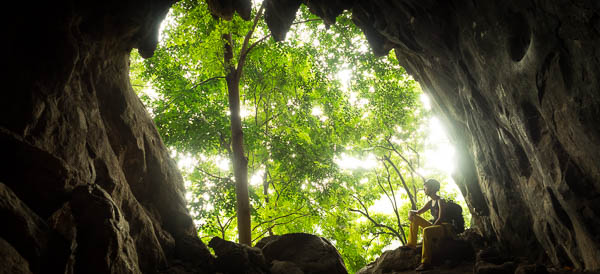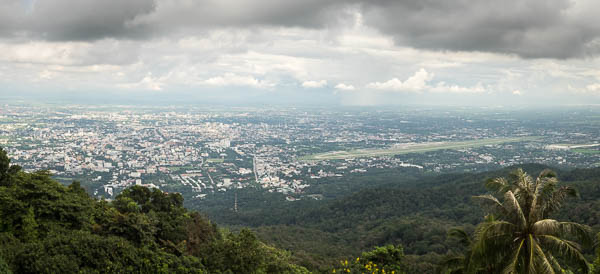Doi Inthanon
Ang Kha Nature Trail
As we wandered down the steps, we saw a large beetle rearing its tiny head. The head was fairly distinctive as it was attached to a large head horn that was supported by a narrow neck. The neck tapered down just before broadening dramatically into a pronotum. The metallic purple beetle turned out to be a male (female's do not have a horn) purple horned scarab beetle (Enoplotrupes sharpi), which is a dung beetle of the family whose members are commonly referred to as earth-boring dung beetles (Family: Geotrupidae). These beetles are detrivores and excavate their burrows in leaf litter and occasionally feces (hence their name). These 'provisions' are then fed upon by the larvae once the eggs hatch! As we approached, the beetle took off and slowly buzzed around us in circles, before disappearing into the damp forest.
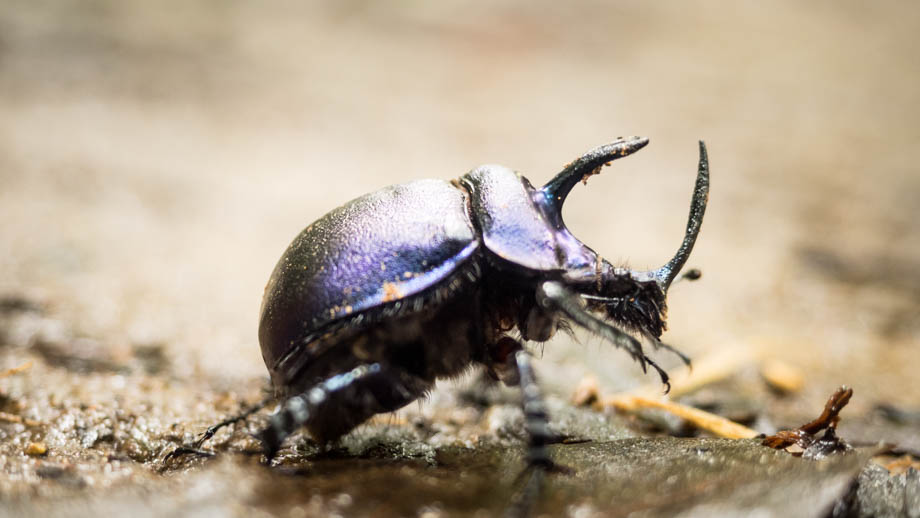
The steps lead down to a junction where turning either way would bring you around the short loop. We chose to take the right path (not the wrong one!), which brought us around the loop in an anti-clockwise direction. Epiphytes were ubiquitous here, and both the air and vegetation of the cloud forest (Doi Phahompok & Doi Chiang Dao being the only other two in Thailand) were completely laden with moisture. The dew and tiny droplets covered the toothed sphagnum (Sphagnum cuspidatum) that lined the sides, which were often neighboured by seas of fern.
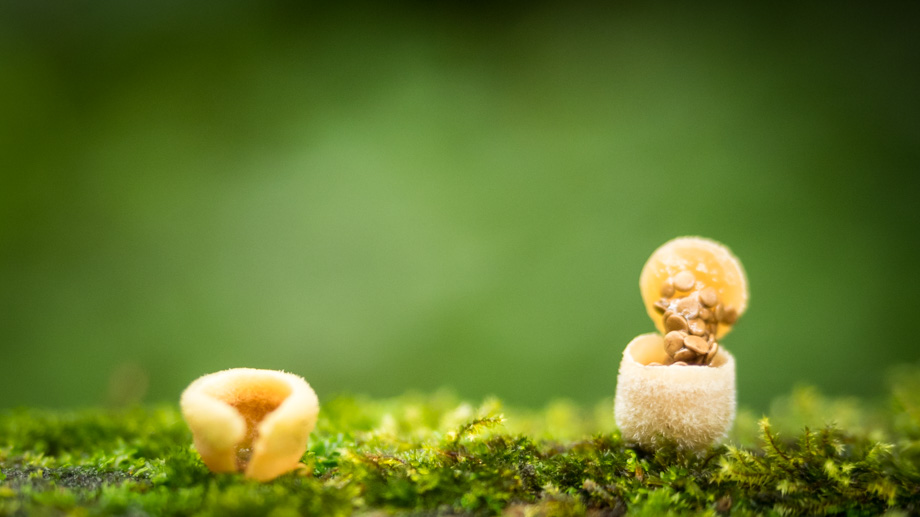
'Ang Kha' means 'Crow's Pond' in Thai, and refers to the highest natural water body in Thailand. The 'pond' is a peat bog that is filled with semi-decomposed litter from the vegetation of the temperate evergreen forest that surrounds it. The high moisture content of the the water-logged soil keeps acidity levels fairly high and also tends to slow down decomposition levels. This is because water fills the air spaces in the soil instead, which deprives microbes of oxygen. All these factors create rather harsh conditions that only specialised plants can survive in. The main tree families that can be found here are (Family: Fagaceae) which are oaks and myrtles, but trees like needlewood (Schima wallichii), a tree that belongs to the tea family, are also quite common. The area is also home to perennial plants like (Cicerbita chiangdaoensis), knotweed (Polygonum chinense), and western pearly everlasting (Anaphalis margaritacea).
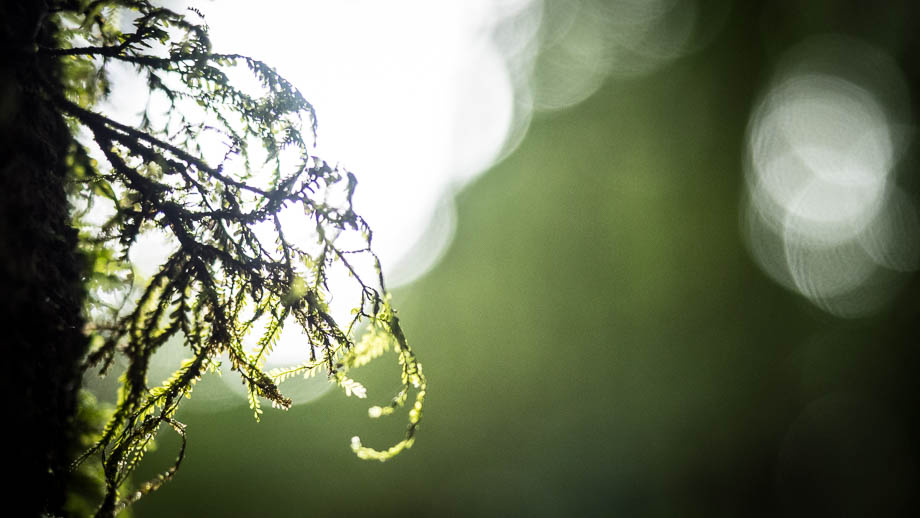
As we made our way further into the forest, we passed clusters of white hydrangeas (Hydrangea sp.) and small trees with red flowers (Rhododendron delavayi) that fringed the edge of the swamp. Silence seemed to permeate the air the deeper we went, and was broken only by the occasional twittering of birds. These birds were perched in the inner branches of the trees, so were a little tricky to observe. They flitted from branch to branch every few seconds, almost as if they were unable to stay still, their life staggered in 5-second stages. Each time they stopped, they cocked their heads to the side as they looked at us curiously. These tiny birds are called chestnut-tailed minlas (Actinodura strigula), and their vibrant colours: yellow belly, grey back, and red-tinged crown, make them fairly easy to spot and identify. They inhabit montane evergreen forests all around South-East Asia and India, up to (elevation : 3500 m) but can also be found much lower (elevation : 1300 m) during harsher winters.
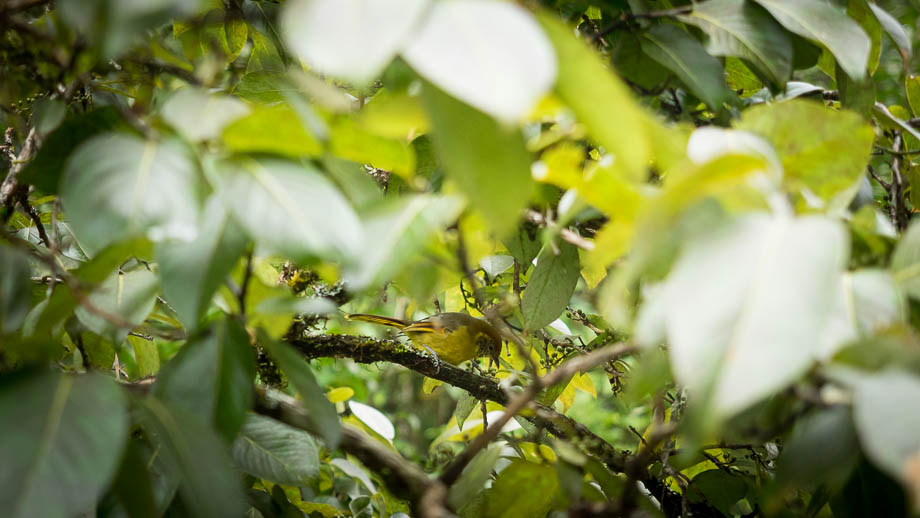
We continued on around the loop, dodging low-lying trunks and irregular branches, some that were suspended above the peat in strange, distorted shapes. Eventually, we reemerged from the loop and back onto the road where our driver was patiently waiting.


